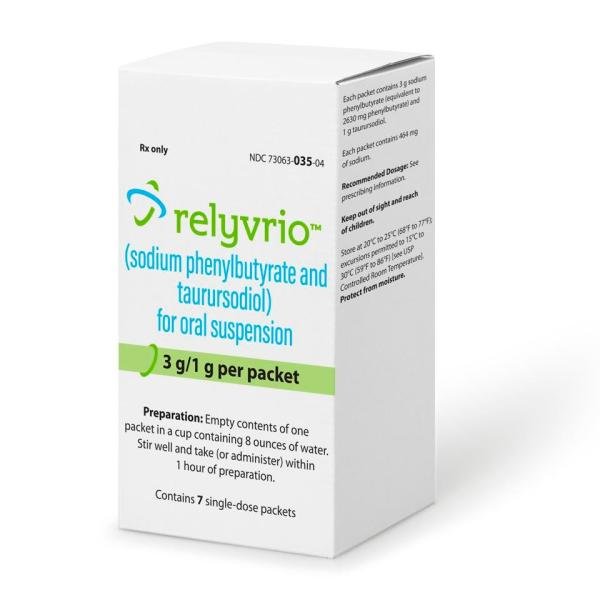Sodium phenylbutyrate/taurursodiol and Alcohol/Food Interactions
There are 3 alcohol/food/lifestyle interactions with sodium phenylbutyrate / taurursodiol.
Caffeine Taurursodiol
Moderate Drug Interaction
MONITOR: Coadministration with phenylbutyrate/taurursodiol (ursodoxicoltaurine) may alter the plasma concentrations of drugs that are substrates of CYP450 1A2, 2B6, and/or 3A4. Based on in vitro studies, phenylbutyrate/taurursodiol may decrease clearance via inhibition or increase clearance via induction of these isoenzymes, resulting in increased or decreased plasma concentrations of agents that are metabolized by one or more of these isoenzymes. Clinical and pharmacokinetic data are currently lacking.
MANAGEMENT: Caution is advised if phenylbutyrate/taurursodiol is used concomitantly with drugs that are substrates of CYP450 1A2, 2B6, and/or 3A4, particularly sensitive substrates or those with a narrow therapeutic range. The prescribing information for taurursodiol combined with sodium phenylbutyrate recommends avoiding coadministration with CYP450 1A2, 2B6, and/or 3A4 substrates for which minimal concentration changes may lead to therapeutic failure or serious toxicities. If coadministration is required, dosage adjustments as well as clinical and laboratory monitoring may be appropriate whenever phenylbutyrate/taurursodiol is added to or withdrawn from therapy. The prescribing information for concomitant medications should be consulted to assess the benefits versus risks of coadministration and for any dosage adjustments that may be required.
References (2)
- (2022) "Product Information. Relyvrio (sodium phenylbutyrate-taurursodiol)." Amylyx Pharmaceuticals, 1
- (2022) "Product Information. Albrioza (sodium phenylbutyrate-ursodoxicoltaurine)." Innomar Strategies Inc.
Nicotine Taurursodiol
Moderate Drug Interaction
MONITOR: Coadministration with phenylbutyrate/taurursodiol (ursodoxicoltaurine) may alter the plasma concentrations of drugs that are substrates of CYP450 1A2, 2B6, and/or 3A4. Based on in vitro studies, phenylbutyrate/taurursodiol may decrease clearance via inhibition or increase clearance via induction of these isoenzymes, resulting in increased or decreased plasma concentrations of agents that are metabolized by one or more of these isoenzymes. Clinical and pharmacokinetic data are currently lacking.
MANAGEMENT: Caution is advised if phenylbutyrate/taurursodiol is used concomitantly with drugs that are substrates of CYP450 1A2, 2B6, and/or 3A4, particularly sensitive substrates or those with a narrow therapeutic range. The prescribing information for taurursodiol combined with sodium phenylbutyrate recommends avoiding coadministration with CYP450 1A2, 2B6, and/or 3A4 substrates for which minimal concentration changes may lead to therapeutic failure or serious toxicities. If coadministration is required, dosage adjustments as well as clinical and laboratory monitoring may be appropriate whenever phenylbutyrate/taurursodiol is added to or withdrawn from therapy. The prescribing information for concomitant medications should be consulted to assess the benefits versus risks of coadministration and for any dosage adjustments that may be required.
References (2)
- (2022) "Product Information. Relyvrio (sodium phenylbutyrate-taurursodiol)." Amylyx Pharmaceuticals, 1
- (2022) "Product Information. Albrioza (sodium phenylbutyrate-ursodoxicoltaurine)." Innomar Strategies Inc.
Sodium Phenylbutyrate Food/Lifestyle
Moderate Food Interaction
ADJUST DOSING INTERVAL: Coadministration with a high-fat meal may reduce the rate and extent of absorption of sodium phenylbutyrate. When a single 3 g-1 g dose of sodium phenylbutyrate-taurursodiol (sodium phenylbutyrate-ursodoxicoltaurine) was administered to healthy volunteers in the presence of a high-fat, high-calorie meal (approximately 800 to 1000 calories; 500 to 600 calories from fat, 250 calories from carbohydrate, 150 calories from protein), sodium phenylbutyrate peak plasma concentration (Cmax) decreased by 75% and systemic exposure (AUC) decreased by 55%. The Cmax for taurursodiol was not significantly affected, but AUC was increased by 46%. The clinical significance of these changes has not been established. In premarketing studies, patients were advised to take the drug before a meal.
MANAGEMENT: The prescribing information recommends administration of sodium phenylbutyrate-taurursodiol before a meal or snack, particularly in patients of low body weight (less than 70 kg).
References (2)
- (2022) "Product Information. Relyvrio (sodium phenylbutyrate-taurursodiol)." Amylyx Pharmaceuticals, 1
- (2022) "Product Information. Albrioza (sodium phenylbutyrate-ursodoxicoltaurine)." Innomar Strategies Inc.
Switch to consumer interaction data
Sodium phenylbutyrate/taurursodiol drug interactions
There are 586 drug interactions with sodium phenylbutyrate / taurursodiol.
Sodium phenylbutyrate/taurursodiol disease interactions
There are 4 disease interactions with sodium phenylbutyrate / taurursodiol which include:
More about sodium phenylbutyrate / taurursodiol
- sodium phenylbutyrate/taurursodiol consumer information
- Check interactions
- Compare alternatives
- Side effects
- Dosage information
- During pregnancy
- Drug class: miscellaneous central nervous system agents
- En español
Related treatment guides
Drug Interaction Classification
| Highly clinically significant. Avoid combinations; the risk of the interaction outweighs the benefit. | |
| Moderately clinically significant. Usually avoid combinations; use it only under special circumstances. | |
| Minimally clinically significant. Minimize risk; assess risk and consider an alternative drug, take steps to circumvent the interaction risk and/or institute a monitoring plan. | |
| No interaction information available. |
See also:
Further information
Always consult your healthcare provider to ensure the information displayed on this page applies to your personal circumstances.


